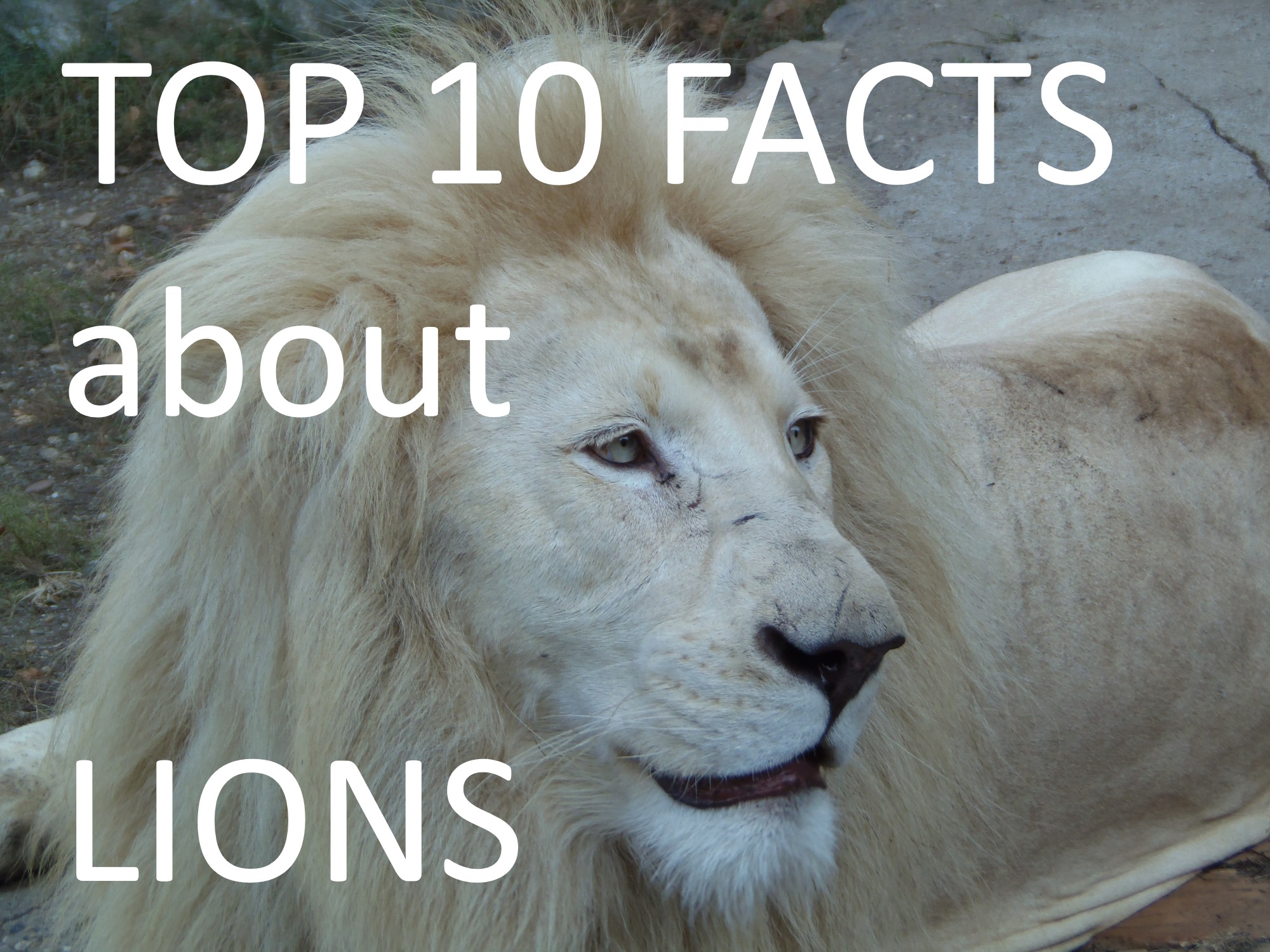by MSc Gvapo Tripinovic and Adam Tripinovic
Hello, and welcome back to our blog ParentingDad.com!
Adam and I are thrilled to share with you some astounding lion facts that will blow your mind.
Lions are one of the most fascinating animals on the planet, with many secrets you may not know yet.
So let’s get started!
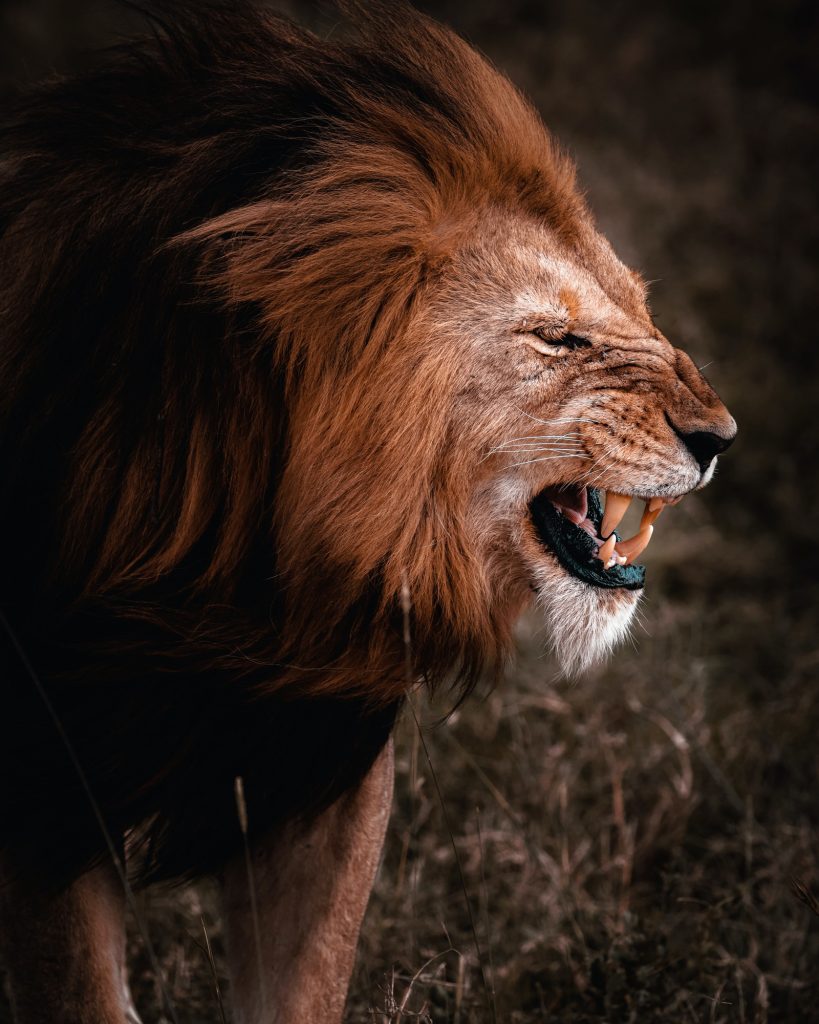
Lions are powerful and majestic, often regarded as the “Kings of the Jungle.”
But did you know that most lions live in grasslands and savannas?
True, only one small population of lions lives in an Indian forest. Mostly in Gir Forest National Park. These are known as Asiatic lions, both rare and endangered. Just about 600 of them remain in the wild!
The remaining lions are from a different subspecies known as African lions, found in many countries south of the Sahara desert.
These powerful cats are pretty large. Male lions weigh up to 190 kg or 420 pounds, while females can weigh up to 130 kg or 290 pounds.
Lions are very social animals.
They live in groups called pride.
A lion pride usually consists of related females and their cubs and one or more males who protect them.
One of the most distinctive features of lions is their mane – a long hair around their necks and heads.
Only male lions have manes and can grow up to 16 centimeters long (6.3 inches).
The lion’s mane grows longer and darker as they age, indicating the animal’s strength and health.
For female lions, this is a perfect indicator of their mates’ strength and health. The longer and darker the main, the more attractive the male lion is.

Mane also aims to protect the lion’s head and neck from injuries during fights with other males. Again, the longer and healthier the main is, the better the protection.
Lions make sounds like roars, growls, snarls, and purrs to communicate with each other. They also use body language and scent marking to convey messages. The female lions do most of the hunting for food, while the males patrol their territory and fight off intruders.
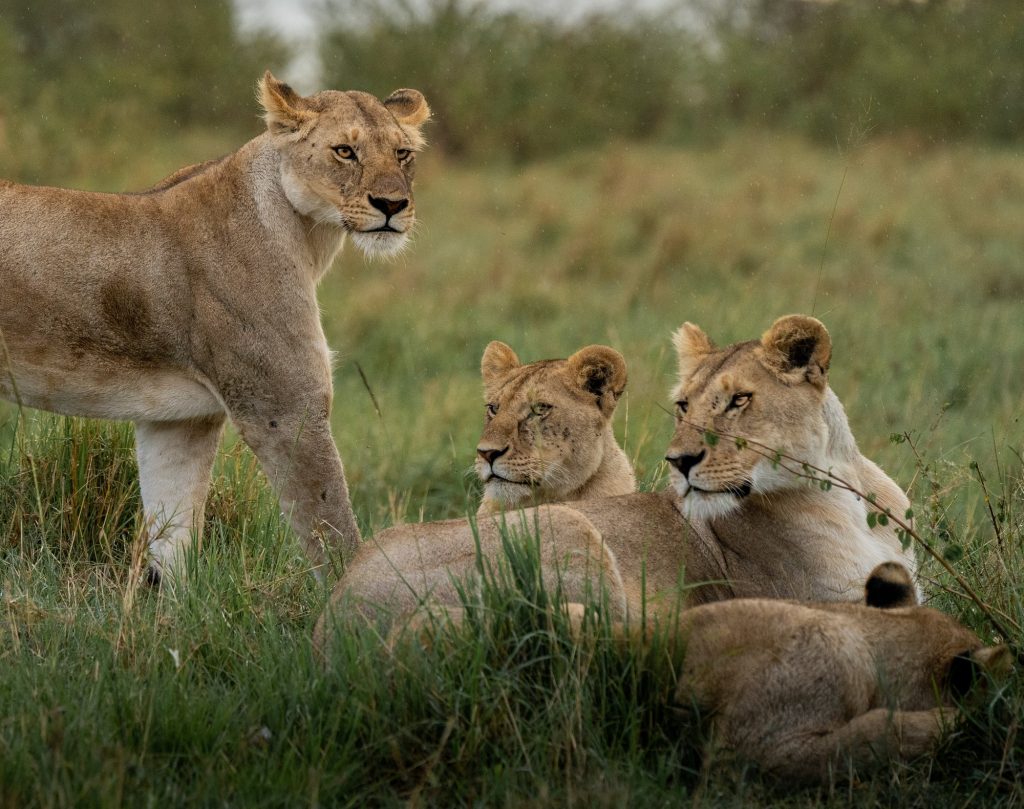
Female lions are team players and hunt in formations.
When hunting, each lioness has a specific role and position. The ones positioned as wings chase the pray toward the center, where the stronger females take the pray down.
Female lions like to hunt during the night and in storms.
As with most cats, lionesses are night hunters when they can use the veil of night to approach their prey silently. They are intelligent hunters and use the cover of the storms, so the game can’t hear them until it is too late.
Lions have a big appetite.
Lions can eat up to 88 pounds (40 kilograms) of meat in one meal or about a quarter of their body weight! Their favorite prey animals include zebras, antelopes, and buffaloes.

Lions use their sharp teeth and claws to catch and kill their food.
Their tongues have rough papillae (sharp, pointed rasps looking like small hooks) that help them scrape off every bit of meat from the bones.
Lions can run up to 50 miles per hour (80 kilometers per hour) for short distances, jump up to 36 feet (11 meters) in the distance and 12 feet (3.5 meters) up, and bite with a force of 650 pounds per square inch (4,500 newtons).
For example, normal human bite force is around 170 pounds per square inch or four times weaker.
It is interesting that neither is even close to the saltwater crocodile, with 3700 PSI, which holds the title of the greatest bite force among animals.
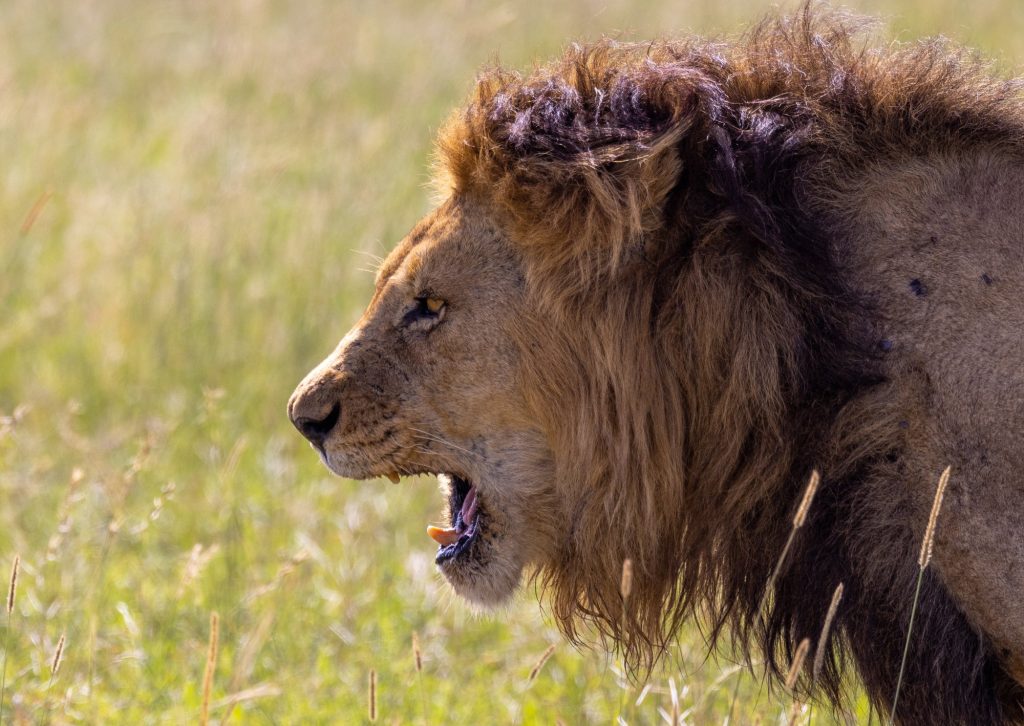
Roaring together.
Lions are the only cats known to roar together. The dominant male starts, and the rest of the pride follows. Even the young cubs are joining in a family call. A lion family’s roar usually lasts 30 to 40 seconds and aims to mark territory.
These lions’ roars are very loud—up to 114 decibels—and can be heard up to 5 miles (8 kilometers) away!
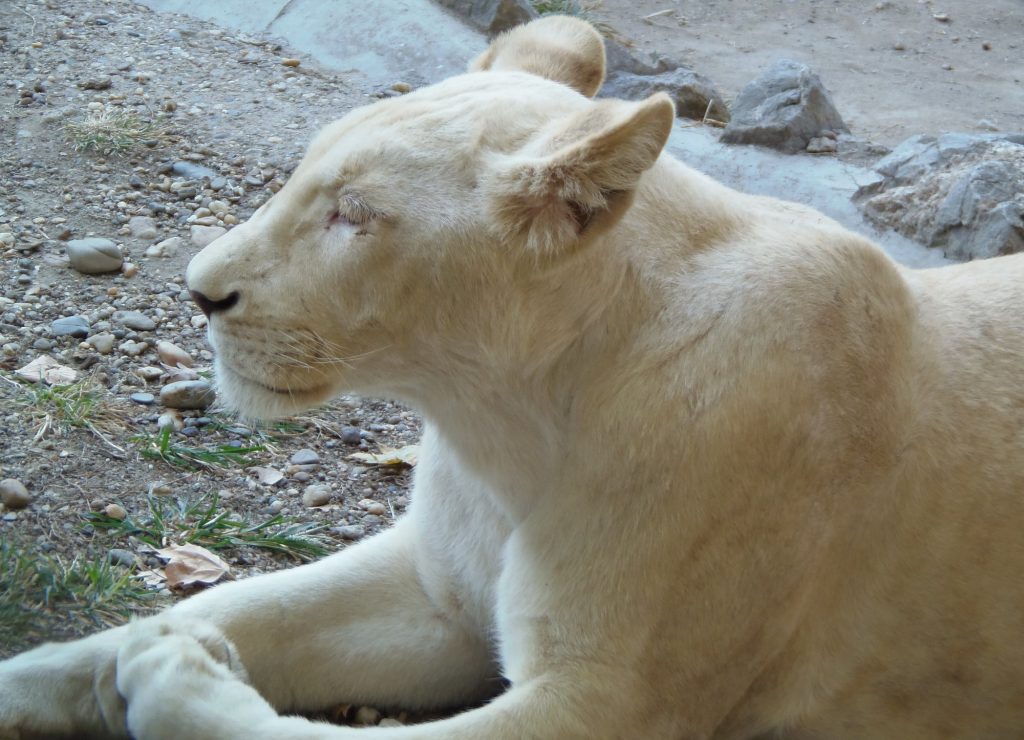
Lions spend most of their time resting or sleeping – up to 20 hours a day!
That way, they conserve energy and grow more muscular.
Lions are amazing animals that deserve our respect and admiration.
There are only about 23,000 lions left in the wild today – less than half what there were 20 years ago!
Lions have disappeared from more than 90% of their historical habitats.
This mainly happened in just a few decades due to human expansion and poaching.

We must do everything possible to protect these magnificent creatures before it’s too late and they go extinct.
Adam and I hope you enjoyed reading this blog post about lions as much as we did writing it. We thank you for visiting our website ParentingDad.
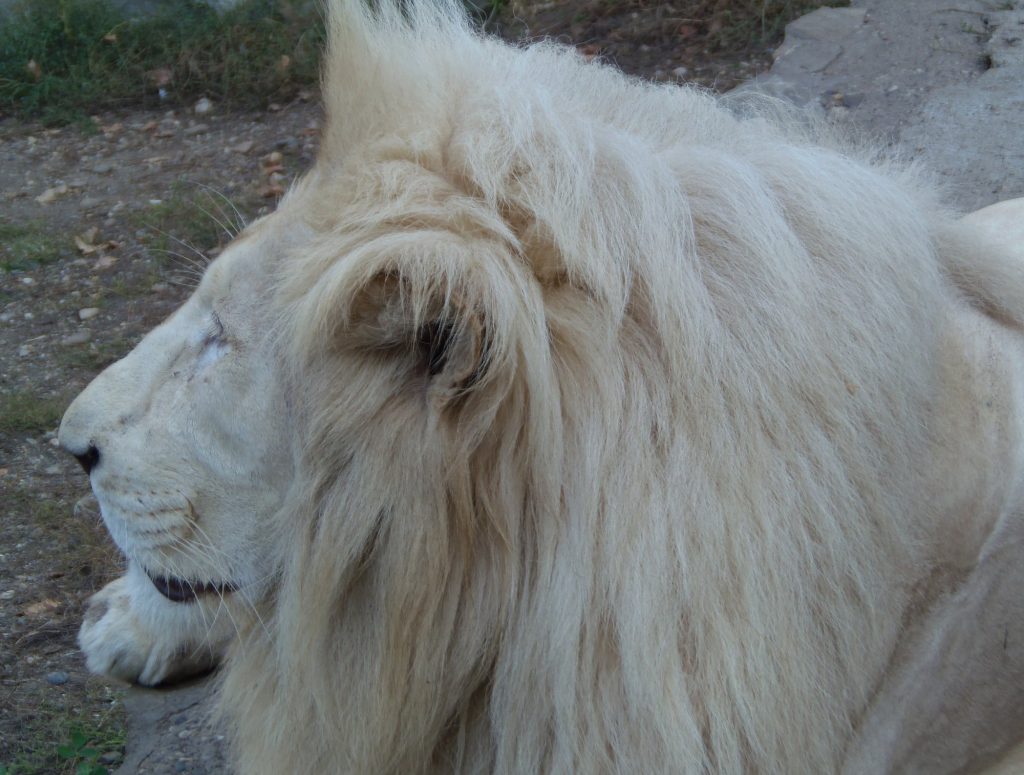
While here, please check some of our other Educational, Active Life and healthy Food, or How to be a Better Dad – Q & A articles.
If you’d rather watch a video or listen to our articles, check out our YouTube channel, Top 10 Facts.
You can find more great articles and videos about animals here:
Alpacas, Butterflies, Cheetahs, Dolphins, Do Fish Sleep, Dog – Which dog breeds are the smartest, Elephants, Great White Sharks, Sharks in aquariums, Snakes, Hummingbirds, Jellyfish, Lions, Pigeons, Red Pandas, Owls, Seagulls, Snails, Squirrels, and Wolves.
What animals would you like us to describe next?
Tell us in the comments below!
Adam and I wish you a great day. Stay well, and keep smiling.
This article might contain product links, so we can get a small commission if you buy them. That way, you support this blog and our educational YouTube channel, for which I am thankful.
